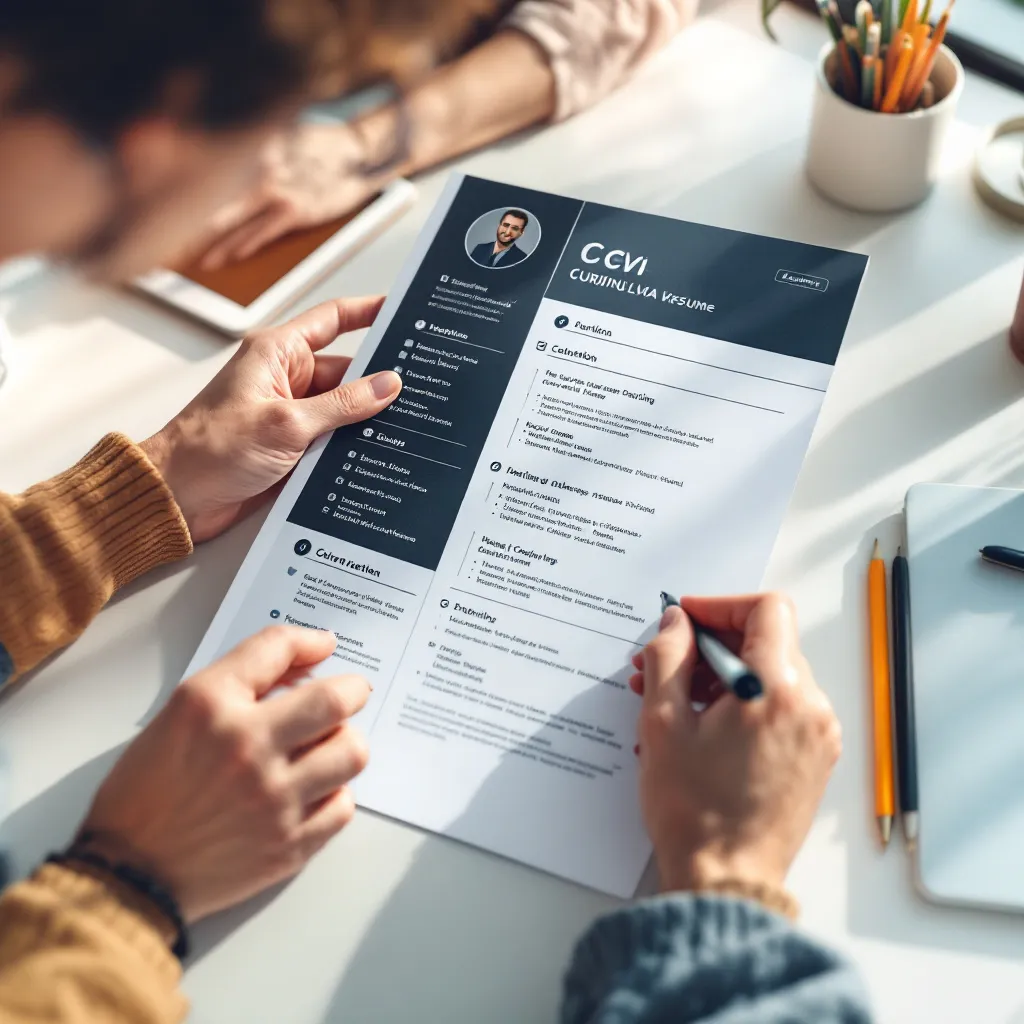In today’s competitive job market, your CV has mere seconds to make an impression. With recruiters spending an average of just 7 seconds scanning each resume, a concise, impactful one-page CV can be your secret weapon. This guide will help you create a powerful single-page resume that showcases your value without sacrificing substance.
Why Choose a One-Page CV Template
The statistics speak for themselves: 78% of hiring managers prefer concise formats that highlight key achievements. A single-page approach offers several advantages:
- Improved readability: Recruiters can quickly scan your qualifications
- Better ATS performance: One-page resumes often perform better in applicant tracking systems due to clearer keyword targeting
- Forced prioritization: You’ll include only your most impressive and relevant accomplishments
- Versatility: Suitable for both early-career professionals and executives with decades of experience
As one hiring manager told Resume Genius, “A concise, well-organized resume demonstrates respect for my time and shows the candidate can prioritize information effectively.”
Essential Elements to Include in a One-Page CV
Must-Have Sections
- Header: Your name, phone, email, LinkedIn profile, and portfolio link (if relevant)
- Professional Summary: 2-3 impactful lines that highlight your unique value proposition
- Key Skills: 5-6 relevant hard and soft skills that align with the job description
- Experience: Focus on your 2-3 most relevant roles with quantified achievements
- Education: Degree, institution, and graduation year (omit GPA unless you’re a recent graduate)
Optional Sections Based on Relevance
Depending on your field and experience level, consider including:
- Projects: Showcase specific accomplishments that demonstrate key skills
- Languages: Include proficiency levels if relevant to the position
- Certifications: List only those relevant to your target role
- QR code: Link to your digital portfolio or LinkedIn profile
ResuFit helps you prioritize the most impactful information by automatically analyzing job descriptions and suggesting the most relevant content to include.
Design Principles for Maximum Impact
The visual presentation of your one-page CV template is just as important as its content:
- Fonts: Use clean, professional fonts like Calibri or Arial at 11-12pt
- Margins: Keep between 0.5″–1″ to maximize space without appearing crowded
- White space: Incorporate strategic spacing to improve readability
- Two-column layouts: Consider using sidebars for skills or languages
- Color: Use one accent color for headers to maintain professionalism while adding visual interest
The best resume formatting creates a clear visual hierarchy that guides the reader’s eye to your most impressive qualifications.
Content Optimization Techniques
To maximize impact while minimizing space:
- Use action verbs: Begin bullet points with powerful words like “Spearheaded,” “Orchestrated,” or “Transformed”
- Quantify achievements: Include numbers whenever possible (e.g., “Increased sales by 40% in 6 months”)
- Eliminate redundancy: Remove repetitive information and filler words
- Focus on recent experience: Highlight the last 10 years unless earlier roles are particularly relevant
- Tailor to each application: Customize your content to match the specific job requirements
For example, rather than stating “Responsible for managing social media,” write “Grew Instagram following by 15K in 3 months, increasing engagement by 35%.”
ResuFit can help optimize your content by automatically identifying the most impactful achievements to highlight based on the specific job you’re targeting.
Common Mistakes to Avoid
Even the best resume templates can be undermined by these common errors:
- Tiny, unreadable fonts: Never go below 10pt to squeeze in more text
- Excessive personal information: Skip irrelevant hobbies and interests
- Dense paragraphs: Use 3-5 concise bullet points per role
- Inconsistent formatting: Maintain uniform styling throughout
- Generic content: Avoid vague statements that could apply to anyone
Remember that a one-page CV isn’t about including everything—it’s about showcasing your most impressive and relevant qualifications.
Practical Examples and Templates
Different industries may require different approaches to single page resume formats:
- Tech Industry: Focus on specific technical skills and quantifiable project outcomes
- Marketing: Highlight measurable campaign results and creative accomplishments
- Finance: Emphasize analytical abilities and financial impact metrics
- Healthcare: Showcase patient care improvements and specialized certifications
For American resume format samples, look for templates that prioritize work experience in reverse chronological order with a skills section near the top.
Creative professionals might benefit from art resume templates that incorporate subtle design elements while maintaining professionalism.
Tailoring Your CV for Different Career Stages
Your approach should adapt to your career progression:
-
Students/Recent Graduates: Emphasize education, internships, and transferable skills from academic projects. Free student resume templates can provide excellent starting points.
-
Mid-Career Professionals: Focus on career progression and quantifiable achievements, such as accounting experience examples that demonstrate increasing responsibility.
-
Senior Executives: Highlight strategic leadership, organizational impact, and industry recognition.
If you’re struggling to condense your experience effectively, affordable resume writing services or tools like ResuFit can help you identify what to prioritize.
Conclusion
A powerful one-page CV forces you to distill your professional narrative into its most compelling elements. By following these guidelines, you’ll create a resume that not only passes the 7-second test but also showcases your unique value to potential employers.
Remember, the best CV writing service is one that helps you highlight your achievements in relation to specific job targets. With ResuFit‘s AI-powered optimization, you can create a tailored, impactful one-page CV for each application in minutes, significantly increasing your chances of landing interviews.
Your one-page CV isn’t just a shorter document—it’s a strategic marketing tool designed to showcase your most impressive qualifications and secure your next career opportunity.




















